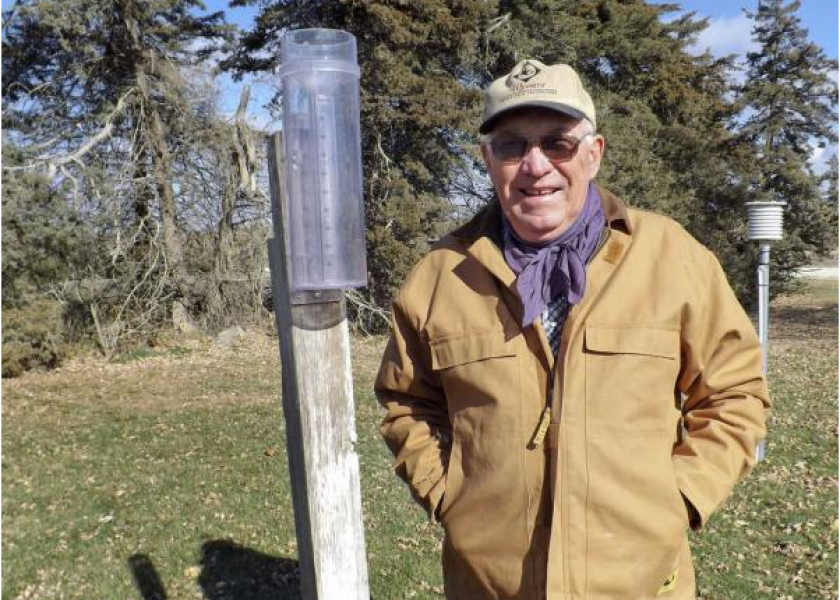Kansas Farmer Reports Weather for 3 Decades

Baileyville, Kan., farmer Maurice Heiman walks through his milk barn to a calendar tacked to the wall. Jotted down in each of the boxes for the days of November is its corresponding weather data: high and low temperatures, precipitation amounts, wind direction, sky conditions and other noteworthy observations.
For 33 years, Heiman has been watching and documenting the weather in his neck of northeast Kansas and calling or emailing in his observations at least twice a day to the National Weather Service at Philip Billard Municipal Airport in Topeka, The Topeka Capital-Journal reports.
He is one of about 300 official volunteer weather observers in Kansas, and among about 8,000 in the United States.
"I really don't know how I got started," Heiman, 72, said of his being an official observer for the National Weather Service. "I was an unofficial official reporter for a long time."
In October, Heiman was among 25 individuals throughout the nation who received the John Campanius Holm award, one of the highest honors the National Weather Service can give to a volunteer observer. Heiman becomes eligible in five years for the Jefferson Award, presented to the nation's outstanding volunteer observer.
Heiman, who raises stock cattle and recently sold his herd of sheep after raising the animals for 32 years, said he started paying attention to the weather while growing up on his parents' farm, where he lives today. His father, Joseph Heiman, who operated a grade-A dairy on the property in the 1950s, purchased a magnetic thermometer that he hung in the milk barn and would reset every day to read the high and low temperatures.
"He would write them on the calendar. I still do it," he said, adding he also documents the daily highs and lows and moisture readings in a small spiral notebook.
At some point, Heiman said, he began calling the National Weather Service during "rough weather" to report storms, high winds and hail. At that time, NWS had reporters in Centralia and Axtell, and eventually Heiman asked whether he could send in conditions from Baileyville. He also began calling in precipitation totals to KMZA radio station in Hiawatha.
Today, Heiman reports rainfall and snowfall amounts to KSNT-TV in Topeka, KRVN radio station in Lexington, Neb., and the Seneca newspaper. In addition to the NWS, he also sends a daily report to the Community Collaborative Rain, Hail and Snow Network, a nonprofit network of volunteers who measure and map precipitation using low-cost measurement tools and an interactive website.
"I may call the weather bureau two or three times during a storm," he said, adding he also has called in reports in the middle of the night during severe weather.
Heiman recalls reporting hail the size of hen eggs four or five years ago and a small tornado that hit his farm in 1986, damaging his sheep shed and other outbuildings, tossing sheets of tin across the road and downing electric lines.
Over the years, Heiman has graduated to using digital weather measuring equipment in his home and a cable-based temperature system and freestanding rain/snow gauges in his front yard.
"They were installed about three or four years ago," he said, explaining how the outdoor equipment has to be in an open area so tree leaves and other structures won't obstruct the moisture coming in or out of the gauges.
Heiman also has become adept at detecting when a storm is moving in by observing his livestock and how the wind bends the tree limbs on his farm or resonates off the traffic on nearby US-36 highway.
"I can tell when the weather's changing," he said.
Heiman has kept the 52 calendars that he and his father used to document the weather. Last summer, he brought the calendars into the National Weather Service office so its interns could input the data into the agency's records for use in tracking weather trends.
And what trend does Heiman see for this winter? In early November, when the temperatures were in the 50s and 60s, he predicted a mild winter. A few days later, the mercury in thermometers struggled to climb up to the freezing mark.
"I now think it will be a moderate winter," he said with a laugh.







